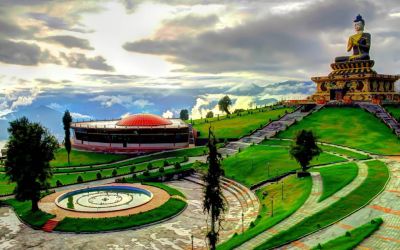Strictly Local: Indigenous Tribes of Sikkim
Sikkim, the tiny Himalayan state in northeastern India, is not just known for its picturesque landscapes and breathtaking mountains. It is also home to a fascinating array of indigenous tribes who have inhabited the region for centuries. These tribes have their unique cultures, traditions, and way of life that have remained relatively untouched by modern influences. In this blog post, we will explore the indigenous tribes of Sikkim and the rich cultural heritage they possess.
The Lepcha Tribe
The Lepcha tribe is one of the oldest and most prominent indigenous tribes in Sikkim. They are believed to be the original inhabitants of the region, with a history dating back thousands of years. The Lepchas have their distinct language, religion, and customs, which are deeply rooted in nature and the mountains that surround them.
The Lepcha people have a close connection to the environment and believe in preserving their natural resources. They have rich knowledge of medicinal plants, herbs, and the flora and fauna of the region. Traditional Lepcha medicine, known as "Mun Mun," is renowned for its healing properties and is still practiced by their tribal healers.
The Lepchas celebrate several festivals throughout the year, the most important being "Saga Dawa." It is a sacred festival that commemorates the birth, enlightenment, and death of Lord Buddha. During this festival, Lepchas gather for religious ceremonies, traditional dances, and singing folk songs.
The Tamang Tribe
The Tamang tribe is another prominent indigenous tribe in Sikkim, mainly residing in the eastern and central parts of the state. They are known for their vibrant culture, colorful attire, and unique traditions.
The Tamangs have their distinct language called "Tamang language," which is a part of the Tibeto-Burman language family. They are skilled artisans and renowned for their craftsmanship in pottery, weaving, and carpet making.
The Tamangs celebrate several festivals, the most significant being "Sonam Losar," which marks the beginning of the Tibetan New Year. During this festival, the Tamang community gathers for a series of rituals, cultural performances, and traditional dances.
The Limbu Tribe
The Limbu tribe is predominantly found in the eastern part of Sikkim and is known for their strong sense of community and rich cultural heritage. They have their unique language, religion, and customs that distinguish them from other tribes in the region.
The Limbus are renowned for their martial arts, known as "Sya Khya," which combines self-defense techniques with traditional dances. This art form has been passed down from generation to generation and is an integral part of their cultural identity.
The Limbu tribe celebrates several festivals throughout the year, with "Pang Lhabsol" being the most important. This festival is dedicated to the worship of Mount Khangchendzonga, the guardian deity of Sikkim. During Pang Lhabsol, the Limbus showcase their traditional attire, perform cultural dances, and organize community feasts.
The Bhutia Tribe
The Bhutia tribe, also known as the "Lhopo" or "Denzongpa," is one of the largest indigenous tribes in Sikkim. They have a rich history, tracing their roots back to Tibet. The Bhutias have their distinct language, religion, and traditional attire.
The Bhutias are primarily agriculturists and rear livestock in the high-altitude regions. Yak herding is an essential part of their livelihoods, and they utilize various products derived from yaks such as milk, cheese, meat, and wool.
One of the most famous festivals celebrated by the Bhutia tribe is "Losar," which marks the Tibetan New Year. It is a vibrant festival characterized by traditional dances, music, mask performances, and displays of intricate colorful designs.
Conclusion
Exploring the indigenous tribes of Sikkim is like stepping into a different world altogether. Their unique cultures, traditions, and way of life offer a glimpse into the rich heritage of the region. As visitors, it is essential for us to respect and appreciate the customs and values of these tribes. By supporting and promoting sustainable tourism, we can help preserve their cultural identity for future generations.
So, the next time you plan a trip to Sikkim, make sure to immerse yourself in the traditions and customs of these indigenous tribes. Experience their warm hospitality, taste their traditional cuisine, and witness the vibrant festivals that showcase their rich cultural heritage. It will be an enriching and unforgettable experience.
Share this post with your friends and family who are interested in exploring the indigenous tribes of Sikkim!
Disclaimer : The information provided in this blog is for general informational purposes only. While we strive to keep the content accurate and updated, TravelSetu assumes no liability for errors or omissions. If you believe any part of this blog infringes your rights or causes concern, please notify us immediately at info[at]travelsetu[dot]com so that appropriate action can be taken.




















